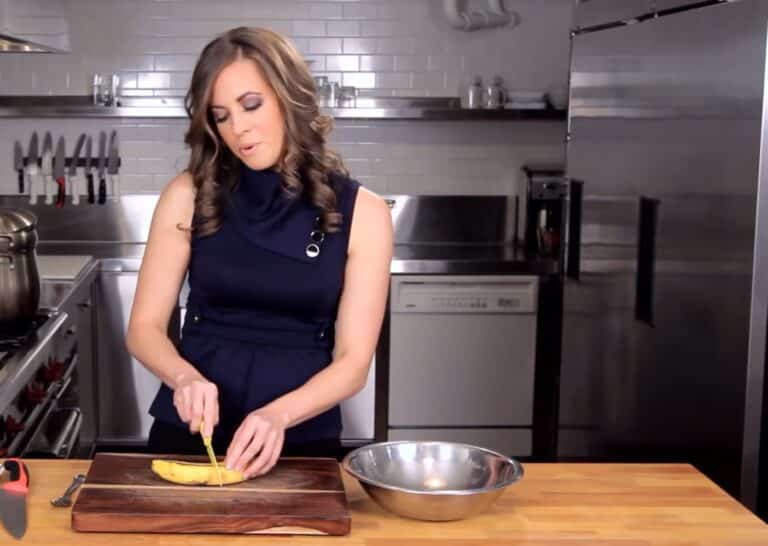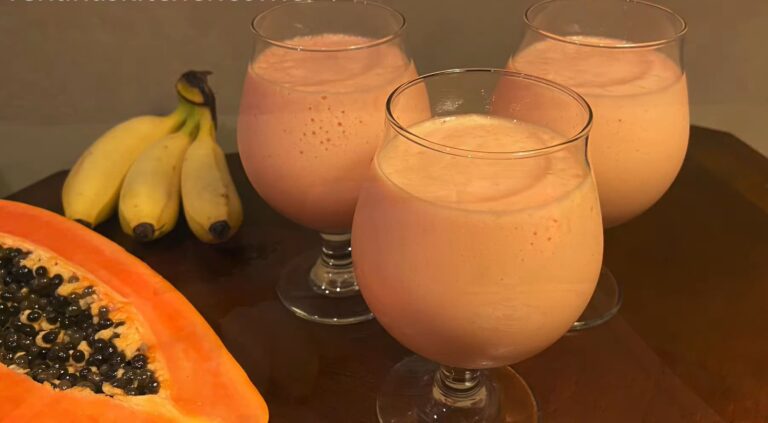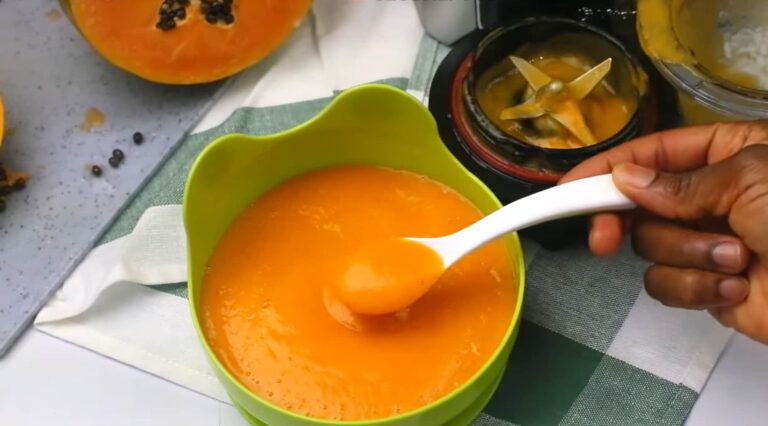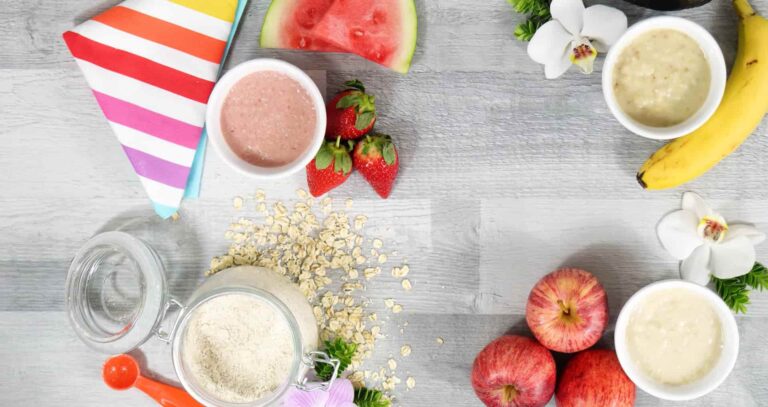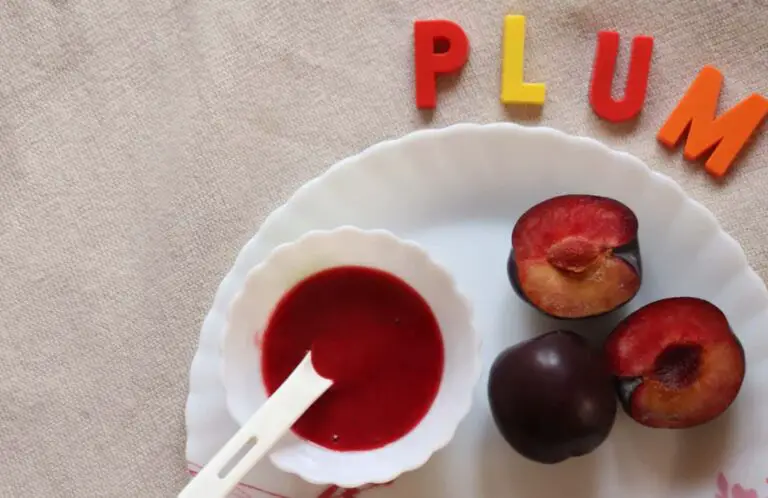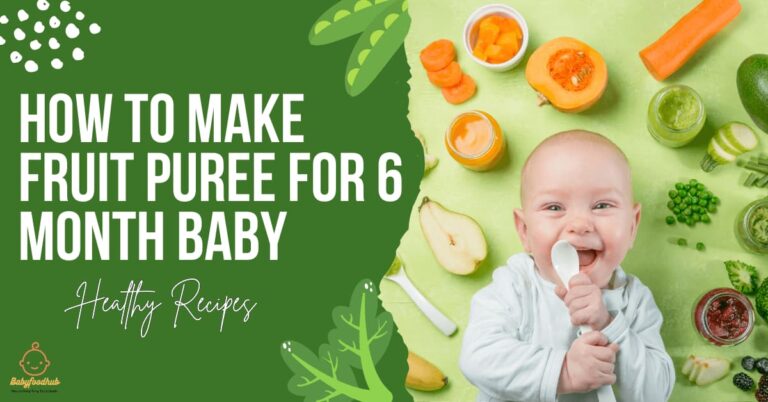How to Make Carrot Puree for Baby: Quick & Nutrition
To make carrot puree for a baby, steam peeled carrots until tender, then blend to a smooth consistency. Introduce carrots as they are rich in beta-carotene and an ideal first food for babies.
Making your baby food, like carrot puree, ensures that your little one enjoys fresh, nutritious meals free from preservatives and additives found in store-bought varieties. Crafting a homemade version also allows you to monitor the texture, making it perfectly suitable for your baby’s developing palate and chewing skills.
As your baby grows, you can modify the consistency by adding less water or breast milk. Starting with carrot puree is an excellent step towards establishing a healthy eating foundation, contributing to visual and cognitive development. Your homemade carrot puree won’t just be a healthy choice; it’ll also be a hit with your baby’s taste buds, paving the way for a love of vegetables as they grow.
Choosing The Right Carrots
When creating a nutritious carrot puree for your baby, the journey begins with selecting the right carrots. The quality of the carrots has a direct impact on not only the flavor but also the nutritional value of the puree. Picking the best carrots is crucial, and going organic can be a game-changer for your little one’s health.
Selecting Fresh, Organic Carrots
Freshness is key when it comes to carrots. Look for carrots that are firm, smooth, and vibrant in color. Organic carrots are a superior choice as they are grown without harmful pesticides and chemicals. This ensures cleaner produce for your child’s developing system. Here’s how to pick the best:
- Color: Choose carrots that have a deep orange hue, a sign of rich nutrients.
- Texture: Opt for firm carrots that do not bend easily. Soft spots or flexibility may indicate they are past their prime.
- Size: Smaller carrots are often sweeter and more tender, perfect for purees.
Choosing organic carrots is a mindful step towards providing pure and wholesome nutrition for your baby, aiding in their growth and development.
Preparing The Carrots
Welcome to the heart of homemade goodness for your little one – preparing carrots for puree. This vibrant vegetable is packed with essential nutrients, making it an ideal choice for your baby’s first foods. Ensuring that the carrots are prepared properly is paramount to creating a smooth, digestible puree that your baby will love. Let’s dive into the process with some savvy tips to get the best outcome.
Washing And Peeling The Carrots
Begin by selecting fresh, organic carrots whenever possible to minimize exposure to pesticides. Here’s how to start:
- Run each carrot under cold water, scrubbing gently with a vegetable brush to remove any dirt or debris.
- Peel the carrots thoroughly with a vegetable peeler to eliminate the outer layer, which can be tough and bitter.
- After peeling, give the carrots another quick rinse to ensure they’re perfectly clean before the next step.
Properly Chopping The Carrots For Optimal Cooking
Chopping carrots correctly is crucial to ensure even cooking and a consistent texture in the puree. Follow this method for the best results:
- Cut the peeled carrots into uniform half-inch rounds; this size is ideal for cooking thoroughly and quickly.
- Ensure all pieces are approximately the same size to avoid unevenly cooked chunks that could compromise the puree’s smoothness.
- If you’re using baby carrots, simply cutting them into halves or thirds is sufficient, as they are already quite tender.
Remember, proper preparation of carrots not only enhances the cooking process but also contributes to the delicate flavor and texture that will make your baby’s mealtime a joyous experience.
Cooking The Carrots
When you decide to introduce your little one to the delightful taste of carrots, cooking them to the perfect consistency is key. The method you choose can affect both the flavor and the nutritional content, so let’s dive into two popular methods for preparing carrots for pureeing: boiling and steaming.
Boiling The Carrots Until Soft
Boiling is a traditional and straightforward method to prepare carrots for pureeing. To ensure that all the vitamins and minerals remain intact, follow these simple steps:
- Start by peeling your carrots and slicing them into uniform pieces.
- Fill a pot with enough water to cover the carrots and bring to a boil over high heat.
- Once the water is boiling, add the carrots and reduce the heat to a simmer.
- Cover the pot with a lid and let the carrots cook until they are fork-tender, which typically takes about 10-15 minutes depending on size.
- Drain the carrots, reserving some of the cooking liquid for pureeing.
Pro tip: Keep an eye on the tenderness of the carrots as overcooking can lead to a loss of nutrients and flavor.
Steaming The Carrots As An Alternative Cooking Method
Steaming is an excellent cooking method to preserve the natural richness and health benefits of carrots. Here’s how you can steam the carrots to soft perfection:
- Wash and peel the carrots, and then chop them into even pieces.
- Fill a pot with a few inches of water and bring to a boil.
- Place the carrots in a steamer basket above the pot, making sure the water does not touch the bottom of the basket.
- Cover the pot with a lid and let the carrots steam until they are soft enough to puree, typically for about 15-20 minutes.
- Check the softness periodically with a fork, ensuring they are adequately softened for blending.
Remember: Steaming maintains most of the carrots’ vitamins and offers a slightly sweeter taste compared to boiling. This method also avoids the need to add additional water during pureeing, potentially preserving the natural taste of the carrots.
Blending The Carrots
Once your carrots are tender and cooled, it’s time to transform them into a smooth, creamy delight that your baby will love. Here is where the magic happens—in the seamless blending of the carrots to achieve the perfect puree. Crafting a nutritious and delicious carrot puree is all about consistency and technique. So let’s jump right in!
Using A Blender Or Food Processor To Puree The Cooked Carrots
To start, transfer the cooked carrots into a blender or food processor. These tools are designed to create a smooth texture that’s ideal for tiny palates. Don’t overload the machine; work in batches if necessary to prevent overfilling, which can lead to uneven blending.
- Ensure the carrots are cool enough to handle yet still warm to help make a smoother puree.
- Secure the lid tightly on the blender or food processor.
- Pulse the carrots first to break them down, then switch to blending continuously for a finer texture.
- Scrape down the sides periodically to make sure all carrot pieces are incorporated.
- Blend until you achieve a consistency that’s smooth but not watery—a few minutes should suffice.
Adding Water Or Breast Milk To Achieve Desired Consistency
As you blend the carrots, assess the puree. If it’s too thick, you can thin out the consistency. This step is crucial to ensure the puree is not just palatable but also safe for your baby to eat. A thinner consistency can be easier for babies to swallow and digest, especially for those just starting on solids.
- Gradually add small amounts of water, breast milk, or formula to the puree while blending.
- Start with a tablespoon at a time to avoid making it too liquid.
- Continue to blend and assess after each addition until you reach the desired texture.
Using breast milk or formula can also add a familiar taste, which may be comforting for the baby, as well as additional nutrients. Always check the temperature before serving to ensure it is safe for your baby to consume.
Storing Carrot Puree
Once you’ve pureed the humble carrot into a smooth, nutritious delight for your baby, the next critical step is ensuring it stays fresh and safe for consumption. Storing Carrot Puree properly means your little one can enjoy the health benefits over time without compromising on quality. Here are savvy techniques to keep that carroty goodness ready for your baby’s next meal.
Proper Storage Techniques For Homemade Baby Food
Maintaining freshness and nutritional integrity is paramount when it comes to homemade baby food. Here are some steps to follow:
- Temperature Management: After the puree cools, transfer it to a clean, airtight container promptly to avoid bacterial growth.
- Label Clearly: Mark containers with the date of preparation and contents. This helps in tracking its shelf-life and rotating stocks effectively.
- Refrigeration: For short-term storage, keep the puree in the fridge. It’s suitable for up to 48 hours.
- Avoid Cross-Contamination: Use separate utensils when handling the puree to prevent any potential bacterial transfer from other foods.
Freezing And Thawing Carrot Puree For Future Use
For longevity, freezing carrot puree is your best bet. Adhere to these guidelines to ensure safe consumption at a later date:
- Portion Out: Use ice cube trays or small freezer-safe containers to create convenient, single-serving sizes.
- Freeze Promptly: Transfer your puree portions into the freezer as soon as they reach room temperature.
- Thawing: When ready to serve, thaw the required portion in the refrigerator overnight or use a water bath. Avoid microwave thawing to prevent uneven heating.
Remember, once thawed, consume within 24 hours, and never refreeze previously frozen homemade baby food.
Safety Tips
When introducing your baby to solids, safety is paramount. Carrot puree is a nourishing choice for little ones making the transition from milk to solids. To ensure that your homemade carrot puree is both nutritious and safe, follow these crucial tips. By being vigilant about preparation and serving conditions, you can help prevent potential health risks, making mealtimes joyful and worry-free.
Ensuring The Puree Is At An Appropriate Temperature Before Serving
Before offering carrot puree to your baby, it’s critical to ensure it’s at a safe temperature. The puree should be warmed to just above room temperature. Use a clean food thermometer, or test the puree on your wrist to check that it’s warm but not hot. Extreme temperatures can pose a risk, so avoid serving puree that is too hot or cold.
- Always stir the puree after heating it to eliminate hot spots.
- Let the probe of the thermometer touch the middle of the puree for an accurate reading.
- Avoid microwaves if possible; if needed, stir thoroughly and test before serving.
Watching For Signs Of Allergies Or Digestive Issues In Babies
Babies can have an allergic reaction to new foods. Keep an eye out for any signs of allergies, such as hives, itching, swelling, or difficulty breathing. If any of these occur, cease feeding and contact a pediatrician immediately.
Similarly, monitor for signs of digestive discomfort including excessive gas, bloating, or changes in bowel movements. Carrots are high in fiber which can sometimes cause digestive issues in babies not yet used to solid foods. Introduce carrot puree gradually and in small amounts to allow your baby’s digestive system to adjust.
- Start with a small serving to observe how your baby tolerates the puree.
- Keep a food diary to track reactions to new foods, including the carrot puree.
- Consult your pediatrician before introducing any new foods, especially if your baby has known food sensitivities or a family history of allergies.
Nutritional Benefits
Welcome to the treasure trove of health benefits for your little one—carrot puree. This vibrant dish doesn’t just please the palate with its sweet, earthy taste; it’s a powerhouse of nutrients essential for your baby’s growth and development. Let’s peel back the layers to discover the nutritional goodness it brings to the high chair.
Exploring The Essential Nutrients Found In Carrot Puree
Carrots are much more than just a tasty vegetable. They’re packed with essential vitamins and minerals that cater to the needs of a growing baby. Here’s a bite-sized look at what each serving of carrot puree offers:
- Vitamin A – Immensely vital for eye health and vision, carrots are rich in beta-carotene, which the body converts to vitamin A.
- Vitamins C and E – These antioxidants help strengthen your baby’s immune system while also protecting their cells from damage.
- B-Vitamins – Carrot puree contains B-Vitamins like folate, which assists in healthy brain development and functioning.
- Minerals such as potassium – Essential for muscle function and hydration, potassium also plays a role in nerve transmission and heart health.
- Dietary fiber – Supporting a healthy digestive system, fiber in carrots keeps your baby regular and can help prevent constipation.
Incorporating carrot puree into your baby’s meals isn’t just a smart choice; it’s an investment in their health. Pair it with proteins like pureed meats or legumes and healthy fats from avocados or olive oil to create a robust, well-rounded meal plan. Balance is key, and together with a variety of other pureed fruits, vegetables, and grains, carrot puree contributes to a nourishing, balanced diet that supports your infant’s growth and developmental milestones.
Frequently Asked Questions Of How To Make Carrot Puree For Baby
What Are The Benefits Of Carrot Puree For Babies?
Carrot puree is rich in beta-carotene, which supports eye health, and it’s gentle on a baby’s developing digestive system. Its natural sweetness is also appealing to infants.
How Do I Choose The Best Carrots For Puree?
Select organic, fresh, and firm carrots with a bright orange color to ensure they’re nutrient-dense and pesticide-free. Avoid carrots that are limp or have blemishes.
What Is The Ideal Age To Introduce Carrot Puree?
Carrot puree can typically be introduced to a baby’s diet around the 6-month mark, as they start eating solid foods. However, always consult with a pediatrician first.
Can I Add Spices To Baby’s Carrot Puree?
Yes, mild herbs and spices like cinnamon or nutmeg can be added to carrot puree to introduce new flavors, but always in very small amounts suitable for a baby’s palate.
What Is The Shelf Life Of Homemade Carrot Puree?
Homemade carrot puree can be kept in the fridge for up to 3 days, or frozen in ice cube trays and stored for up to 3 months. Always label with the preparation date.
Conclusion
Crafting carrot puree for your little one can be both fun and healthful. With the simple steps outlined, you’re now ready to serve up a homemade, nutrient-rich meal. Remember: choose fresh carrots, steam until tender, and blend to a suitable consistency.


